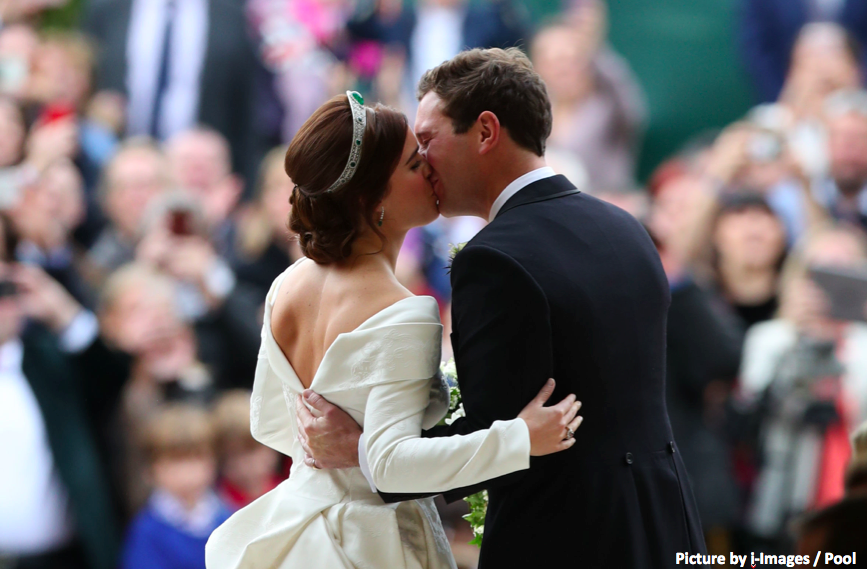
When Queen Camilla stepped into the glittering State Rooms at Windsor Castle for this year’s Diplomatic Reception, royal watchers were quick to notice the dazzling emerald tiara crowning her look. But this wasn’t just any diadem. In a gesture both unexpected and quietly meaningful, the Queen chose to wear the Greville Emerald Kokoshnik – the very same tiara worn by Princess Eugenie on her wedding day in 2018.
To many, the choice read as a subtle but unmistakable show of support for her niece-by-marriage.
The Greville Emerald Kokoshnik, made by Boucheron in 1921 for society grande dame Margaret Greville, is one of the Royal Family’s most striking heirloom pieces. With its central 90-carat cabochon emerald framed by brilliant and rose-cut diamonds, it is a bold departure from the more traditional diamond-and-pearl tiaras worn by most royal brides.
Embed from Getty ImagesWhen Princess Eugenie selected it for her marriage to Jack Brooksbank, it took the world by surprise – a vivid, modern splash of colour with a strong historical backbone. For many royal jewellery fans, it became her tiara.
By choosing to wear it at one of the most formal events of the royal calendar, Queen Camilla has reopened the royal vault doors on a piece closely associated with Eugenie – and signalled that the younger generation’s choices matter and resonate at the highest levels of the family.
The tiara has a long and prestigious lineage. After Margaret Greville’s death in 1942, it passed into the royal collection as part of the famous Greville Bequest, inherited by Queen Elizabeth The Queen Mother before eventually passing to Queen Elizabeth II in 2002. For decades, it remained unseen in public, until Eugenie revived it – turning it into a modern favourite overnight.
Camilla’s decision to wear the tiara is significant because queens traditionally gravitate toward pieces with long-standing royal precedent. Reintroducing a jewel now largely associated with Eugenie sends a warm and respectful message: that the younger generation’s style, symbolism and personal choices are worthy of celebration.
It also underlines Camilla’s increasingly visible role as a unifying matriarch — one who honours the jewels of the past while championing the royals who will carry the family forward.
For Princess Eugenie, whose wedding tiara moment became a defining fashion statement, the Queen’s choice can only be seen as an endorsement. And for royal fans, it was a dazzling reminder that royal jewellery is never just decoration — it is storytelling, heritage, and, in moments like this, a quiet show of solidarity.

